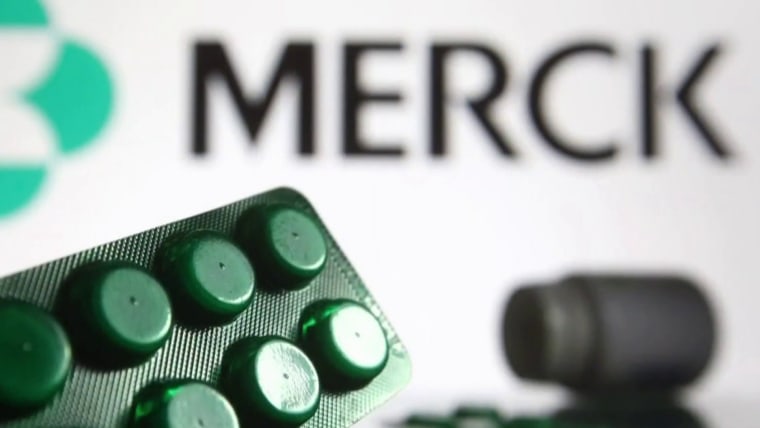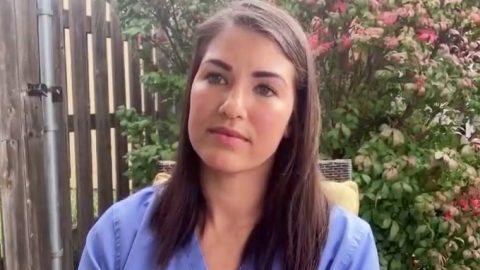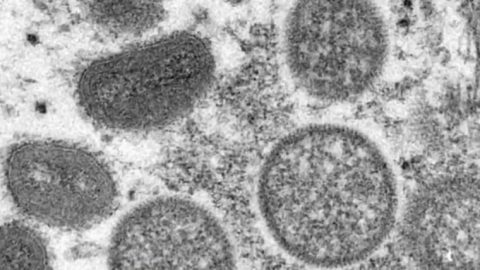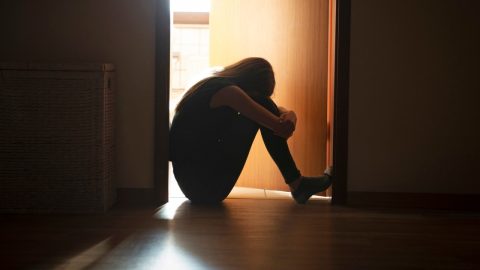Abby Robinson was gasping for air as she drove herself to a Long Beach, California, emergency room on Jan. 19, terrified that her cystic fibrosis and what she presumed was Covid-19 would prove a fatal combination.
After a nurse flagged her as a high-risk patient and a rapid coronavirus test came back positive, a physician offered the 24-year-old graduate student hope: a prescription for Pfizer’s new antiviral cocktail, Paxlovid.
As sick as she was, the responsibility now fell to Robinson to track down a supply of the medication.
Paxlovid, a five-day oral Covid treatment that can significantly reduce the risk of hospitalization and death, has remained in critically short supply since its Dec. 22 emergency authorization.
When Robinson was given the prescription, California was in the midst of a record-breaking omicron-fueled surge in cases. She was competing against scores of other newly diagnosed people for a share of the federal government’s most recent two-week allotment of just 9,560 courses of the pills.
Robinson made a flurry of calls to some two dozen local pharmacies before identifying a nearly exhausted Paxlovid supply at an Orange County CVS. The pharmacy would have been 30 minutes away, she said, had she not driven “in the fast lane” to ensure she arrived before the drug vanished.
“It was really humbling, for someone who desperately needed this drug, how tricky it was to get it and how my timing had to be so perfect,” she said about her ultimately successful quest to obtain Paxlovid. She’s now feeling much better — thanks, she believes, to Paxlovid — but still not quite herself.
These critical shortages have hamstrung health care providers as the winter surge caused by the omicron variant has driven a desperate need for treatments to keep people with Covid out of the hospital. The situation has been worsened by states not prioritizing people at the highest risk of severe illness or death — people who are immunocompromised and unvaccinated people with underlying health conditions.
The sole monoclonal antibody treatment still authorized by the Food and Drug Administration to treat omicron, GlaxoSmithKline and Vir Biotechnology’s sotrovimab, was not available at any hospital near Long Beach, an emergency physician told Robinson.
Timing is critical once someone at high risk of severe Covid is diagnosed. The pills must be started within five days of symptom onset, adding to the anxiety of filling a prescription.
Restricting antiviral prescriptions
Robinson’s frantic medical odysseys are emblematic of the extraordinary lengths to which many Americans have been forced to go for this scarce, potentially lifesaving antiviral medication.
The Biden administration has purchased 20 million Paxlovid courses, half of which Pfizer said it expects to deliver by the end of June and the remainder by Sept. 30. A robust supply of the treatment is not expected until April.
Thus far, the federal government has been able to release just 265,000 Paxlovid courses to state health departments, even as the U.S. documented some 20 million Covid cases and 55,000 related deaths in January alone. While cases of omicron are declining nationwide, there are still more than 140,000 hospitalizations, and thousands of people are dying from Covid daily.
Currently, the federal government apportions the Paxlovid supply to state health departments, which then distribute their share to local pharmacies, health systems and long-term care facilities as they see fit.
“Not unlike the entire Covid response, the federal government has not wanted to put out anything other than guidance,” Richard Freeman, regional chief clinical officer at Loyola Medicine in Chicago, said. “Then it’s up to the states, so you have 50 different versions. I don’t think that’s helpful.”
Little did Robinson know, but California’s health department has not sought to restrict Paxlovid’s availability only to those at the very highest risk of hospitalization and mortality.
According to an NBC News survey of state health departments, only a few — including those in Michigan, Minnesota and New Mexico — have established systems that limit access. Those states direct clinicians to only prescribe Paxlovid to the highest-risk patients. Or the health departments collaborate with pharmacies or health systems to which the state sends Paxlovid to help ensure they adhere to such restrictions.
“Our primary goal, with an eye on equity, is to protect the most vulnerable among us and to prevent the greatest number of severe outcomes,” Dr. Natasha Bagdasarian, chief medical executive of the Michigan Department of Health and Human Services, said.
In Michigan, the state health department issues and regularly updates a guidance document directing physicians to establish that a Paxlovid candidate is in the upper tiers of Covid risk. And then pharmacists at the Meijer retail chain, which is the state’s primary Paxlovid purveyor, confirm the eligibility documentation before filling the prescription.
Other states — such as Indiana, Maryland, North Carolina, Pennsylvania, West Virginia and Wisconsin — take a more relaxed approach, issuing communiqués to health care providers that only advise, but do not require, that they prescribe the therapy to people who most stand to benefit from it. Providers are typically urged to follow the National Institutes of Health Covid-19 treatment prioritization guidelines.
Some states, including Tennessee, have not sent clinicians any guidance on prioritizing access to the antivirals.
Medical ethicist Dr. William Parker argued that the available Covid treatment supply should be more strictly dispensed based on narrow criteria.
“We are justified in restricting access to just the highest-risk patients in order to reduce strain on the health care system and maximize lives saved,” Parker, a health services researcher at the University of Chicago, said.
Dr. Jeffrey Klausner, an infectious disease specialist at the Keck School of Medicine at the University of Southern California, was critical of California’s approach to managing the Covid treatments.
“I have not received any communication from the state or local health department about Paxlovid or other Covid therapy,” Klausner said. “I have had to reach out on my own, often obtaining conflicting or out-of-date information.”
Many hospital systems across the country, such as the Zuckerberg San Francisco General Hospital and Trauma Center, have established internal restrictions on Paxlovid access. Experts noted, however, that this doesn’t stop people at the lower end of the high-risk spectrum from finding a willing independent physician to pen a prescription.
A better distribution system?
As it is, states typically spread Paxlovid through chain pharmacies, leaving frantic residents to race, sometimes across considerable distances, to fill a prescription.
Some health systems have already used a lottery method for dispensing other Covid therapies when supplies were tight. In 2020, the 40-hospital University of Pittsburgh Medical Center system launched a lottery, one weighted to slightly favor front-line workers and people from disadvantaged communities, to allocate Gilead Sciences’ remdesivir to eligible hospitalized patients.
Even when states do restrict Paxlovid to the highest-risk tiers, the allocation system still invites feverish competition for the resource and favors people with financial means and ability to get the drugs, said Dr. Douglas White, a medical ethicist and critical care physician at the University of Pittsburgh.
“It’s turned into a free-for-all,” White said. “First come, first serve is a terrible way to both accomplish the greatest good with a scarce resource and to make sure that that resource is fairly distributed.”
Who should get the antivirals first?
According to the NIH, people at the greatest risk of severe Covid — those in the top prioritization tier — include:
- People who are immunocompromised.
- Unvaccinated people who are 75 and older.
- Unvaccinated people who are 65 and up and have additional risk factors, such as diabetes, cancer, obesity or diseases of the heart, kidneys, liver or lungs.
The next tier of risk includes all unvaccinated people ages 65 and older, as well as all unvaccinated people with risk factors.
It’s not clear whether Paxlovid benefits people who are vaccinated. The study submitted to the FDA only included high-risk unvaccinated individuals, although the agency’s authorization applies to people at “high risk for progression to severe COVID-19” regardless of vaccination status.
“If you just take the FDA at face value, you’re giving Paxlovid to an awful lot of people who will not benefit,” Dr. John Hick, an emergency physician at Hennepin County Medical Center in Minneapolis, said.
Despite her frightening difficulty breathing after developing Covid, Abby Robinson is only in the NIH’s fourth, and last, tier of high-risk individuals, considering she has received a vaccination booster and is younger than 65. Having cystic fibrosis is the one factor that edged her into the overall high-risk category, per the Centers for Disease Control and Prevention.
For people in the lower tiers of the high-risk spectrum, multiple medical ethicists asserted that society should not begrudge them for clamoring for Paxlovid — provided they adhere to the FDA’s authorization terms and any state rules governing access.
“People are behaving rationally in an irrational environment,” said JP Leider, a researcher at the University of Minnesota School of Public Health, who helped craft Minnesota’s Covid therapy prioritization guidance. “You should put guardrails on the system to make sure it’s going to save as many people as possible and is still trying to promote equity.”
For patients who can’t get access to Paxlovid, there are other antivirals authorized by the FDA to treat early Covid cases. Merck’s oral antiviral molnupiravir has been released in a fourfold greater supply than Paxlovid. However, the drug is only 30 percent effective against hospitalization and death and has prompted safety concerns.
Consequently, the FDA specifies that molnupiravir should only be used when other treatments are “not accessible or clinically appropriate.” Yet, health care providers may still look to the drug in hopes of taking advantage of even its modest potential benefit, said Michigan’s Bagdasarian.
Another antiviral, remdesivir, recently got an expanded authorization from the FDA to protect high-risk Covid patients from needing hospitalization. But because remdesivir requires three days of intravenous infusions to treat milder Covid cases, its use will likely remain limited.
That said, Bagdasarian suggested that remdesivir may prove feasible for high-risk people with mild to moderate Covid who are in a long-term care facility, psychiatric hospital or prison, or who are hospitalized for a noncoronavirus reason and are diagnosed with an early case of Covid.
“It’s important to point out that Paxlovid is not our only therapy and that we’re really trying to match our available tools with the right candidate,” Bagdasarian said.










Recent Comments